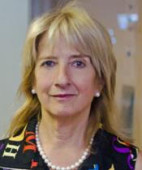
The odds are that we are heading for a new financial crisis, says ABS-expert Ann Rutledge in Forbes. “So, if you ask me whether we are going to have another global financial crisis in 201. “I would say the odds are good. This one probably started in 2013 and by now is well under way.”
Ann Rutledge:
I am a fixed income analyst with a fascination for patterns.
Here’s one to consider: since the Bretton Woods Agreement ended in the 1970s, there has been a financial crisis in the seventh year in three of the last four decades: 1987, 1997, 2007. One way or another, every crisis has involved Asia.
For example, the name for the 1987 stock market crisis is Black Monday.
However, the crisis can be traced back to Asian market jitters the Sunday night before, which kick-started a cascade of structured stock and derivative trades and strained the market beyond its capacity.
Interest parity arbitrage trading fueled the Asian Crisis in 1997.
It involves borrowing a cheap currency with low yields and investing in a stable currency with higher yields to earn spread income, known as positive carry.
Hence the name, carry trades. In theory, rates and prices should reach an equilibrium so there is no arbitrage.
But this was a special time in financial markets. Japan wanted to manage the yen to promote its export-oriented economy.
Other Asian countries with currencies pegged to the dollar had just opened their capital accounts and were attracting foreign investors with higher yields.
The money poured in and strained utilisation capacity until local authorities interceded in late 1998, and the party ended.
The GFC surfaced first in 2007 with the collapse of the U.S. subprime RMBS market. In 2008, it turned into full-scale crisis when Lehman Brothers fell.
This time was also a carry-trade, one involving credit ratings rather than currencies. Banks could buy impaired loans and make them into RMBS with inflated ratings provided by willing rating agencies. These securities were then refinanced in CDOs.
The CDO ratings were based on original ratings on the RMBS-they were not updated with real performance information-so if the rating on an RMBS was inflated, it would flow through to the CDO.
The RMBS CDO market lasted from 2004 until banks’ capacity to sell securities backed by impaired loans was exhausted.
I am not a macro-economist. But, like Chauncey Gardiner, I have been there: I watched futures prices go limit-down from the floor of the Chicago Board of Trade on Black Monday.
My savvy Moody’s colleague in Hong Kong, Lynn Exton, warned me in 1996 about the coming Asian bank crisis. I understood the vulnerability of structured credit ratings before the GFC.
In fact, I left that world in 1999 to plug the widening black hole.
So, if you ask me whether we are going to have another global financial crisis in 2017…I would say the odds are good. This one probably started in 2013 and by now is well under way.
Ann Rutledge is a speaker at the China Speakers Bureau? Do get in touch or fill in our speakers´request form.
Are you looking for more experts on managing your China risk? Do check out our list here.
